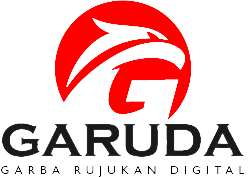ANALISIS PENGGUNAAN SISTEM INFORMASI MANAJEMEN PROYEK BERBASIS FREE OPEN-SOURCE SOFTWARE (FOSS) PADA PERUSAHAAN BERSKALA BESAR DI KABUPATEN BEKASI (STUDI KASUS: GOOGLE SPREADSHEET)
Abstract
Keywords
Full Text:
PDFReferences
B. Llorens and R. Viñoles-Cebolla, “The Influence of the Use of Project Management Tools and Techniques on the Achieved Success,” 2021. doi: 10.1007/978-3-030-54410-2_12.
A. M. Pereira, R. Q. Gonçalves, C. G. von Wangenheim, and L. Buglione, “Comparison of open source tools for project management,” International Journal of Software Engineering and Knowledge Engineering, vol. 23, no. 2, 2013, doi: 10.1142/S0218194013500046.
K. Periyasamy and J. Chianelli, “A project tracking tool for scrum projects with machine learning support for cost estimation,” in EPiC Series in Computing, 2021, vol. 76. doi: 10.29007/6vwh.
T. Ferreira, J. Gutiérrez-Artacho, and J. Bernardino, “Freemium project management tools: Asana, freedcamp and ace project,” in Advances in Intelligent Systems and Computing, 2018, vol. 745. doi: 10.1007/978-3-319-77703-0_100.
J. Samáková, D. Babčanová, H. Hrablikchovanová, J. Mesárošová, and J. Šujanová, “Using the Communication Methods, Tools and Support During Management of Project Communication in Industrial Manufacturing Enterprises,” Research Papers Faculty of Materials Science and Technology Slovak University of Technology, vol. 25, no. 41, 2017, doi: 10.1515/rput-2017-0021.
E. J. Umble, R. R. Haft, and M. M. Umble, “Enterprise resource planning: Implementation procedures and critical success factors,” Eur J Oper Res, vol. 146, no. 2, 2003, doi: 10.1016/S0377-2217(02)00547-7.
PMI Global Standard, “A Guide to the Project Management Body of Knowledge Guide, 6th Edition,” in Project Management Institute, Inc., 2017.
J. Kostalova, L. Tetrevova, and J. Svedik, “Support of Project Management Methods by Project Management Information System,” Procedia Soc Behav Sci, vol. 210, 2015, doi: 10.1016/j.sbspro.2015.11.333.
F. M. Elbahri, O. Ismael Al-Sanjary, M. A. M. Ali, Z. Ali Naif, O. A. Ibrahim, and M. N. Mohammed, “Difference Comparison of SAP, Oracle, and Microsoft Solutions Based on Cloud ERP Systems: A Review,” in Proceedings - 2019 IEEE 15th International Colloquium on Signal Processing and its Applications, CSPA 2019, 2019. doi: 10.1109/CSPA.2019.8695976.
S. Prasad and S. Tanase, “Competition, collaboration and organization design,” J Econ Behav Organ, vol. 183, 2021, doi: 10.1016/j.jebo.2020.12.010.
J. F. de Medeiros, G. Vidor, and A. L. Korzenowski, “Review of experimental methods to optimise the collaboration between organisations in the new product development process,” International Journal of Business Innovation and Research, vol. 15, no. 4, 2018, doi: 10.1504/IJBIR.2018.090463.
A. Steiber, “Technology management: Corporate-startup co-location and how to measure the effects,” Journal of Technology Management and Innovation, vol. 15, no. 2, 2020, doi: 10.4067/s0718-27242020000200011.
B. Latour, “On actor-network theory: A few clarifications,” 1996.
B. Latour, “Social Theory and the Study of Computerized Work Sites,” 1996.
E. Hofvenschioeld and M. Khodadadi, “Communication in futures studies: A discursive analysis of the literature,” Futures, vol. 115, 2020, doi: 10.1016/j.futures.2019.102493.
A. Caliandro, “Digital Methods for Ethnography: Analytical Concepts for Ethnographers Exploring Social Media Environments,” J Contemp Ethnogr, vol. 47, no. 5, 2018, doi: 10.1177/0891241617702960.
D. Murthy, “Digital ethnography: An examination of the use of new technologies for social research,” Sociology, vol. 42, no. 5. 2008. doi: 10.1177/0038038508094565.
K. Peffers, T. Tuunanen, M. A. Rothenberger, and S. Chatterjee, “A design science research methodology for information systems research,” Journal of Management Information Systems, vol. 24, no. 3, 2007, doi: 10.2753/MIS0742-1222240302.
A. Adeniran, J. Mastho, and N. Beacham, “An appraisal of a collaboration-metric model based on text discourse,” in CEUR Workshop Proceedings, 2019, vol. 2501.
H. Benbya, G. Passiante, and N. A. Belbaly, “Corporate portal: A tool for knowledge management synchronization,” Int J Inf Manage, vol. 24, no. 3, 2004, doi: 10.1016/j.ijinfomgt.2003.12.012.
DOI: https://doi.org/10.52447/jkte.v8i1.6647
Refbacks
- There are currently no refbacks.









